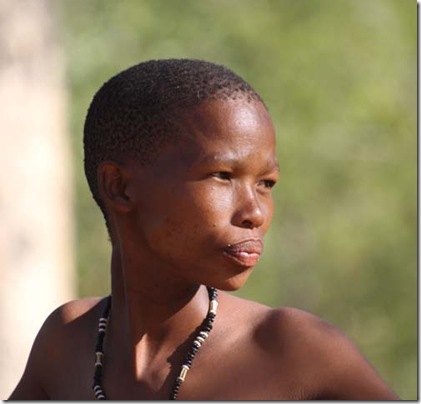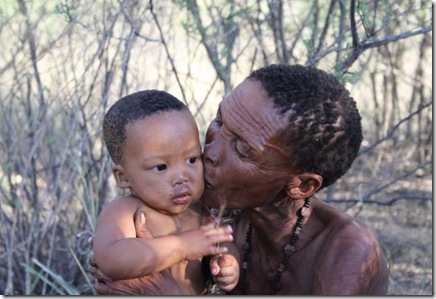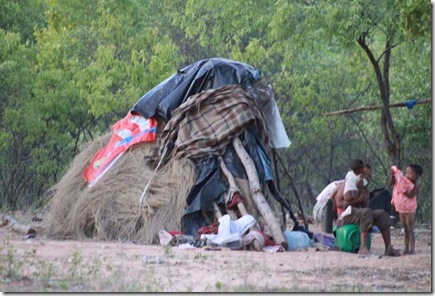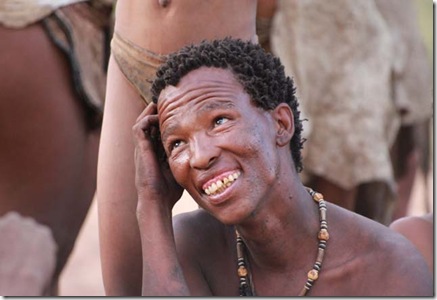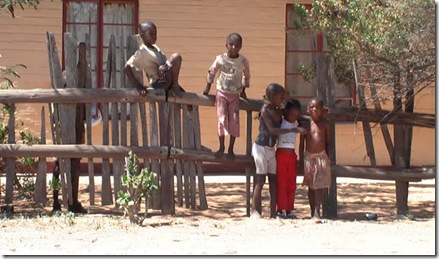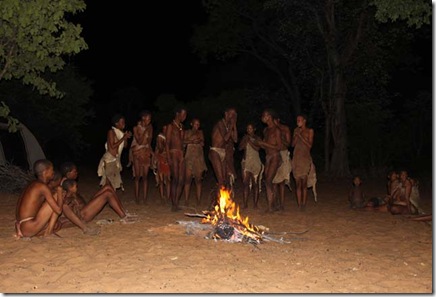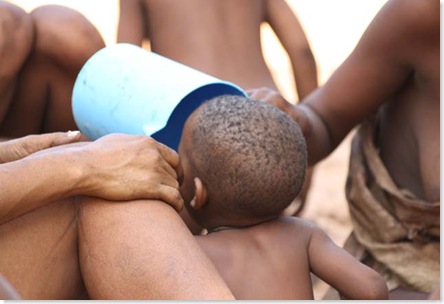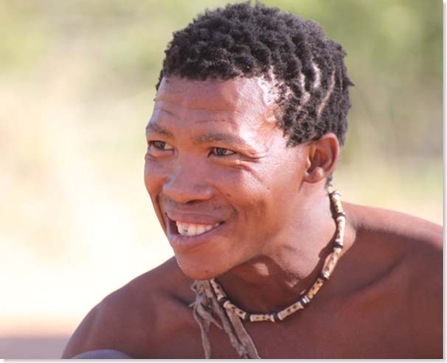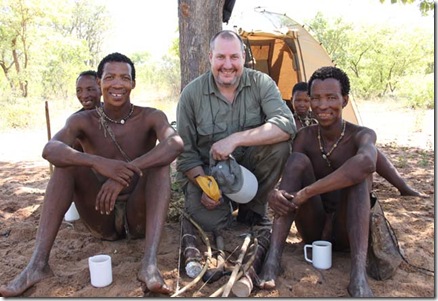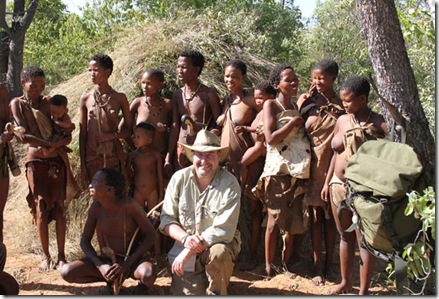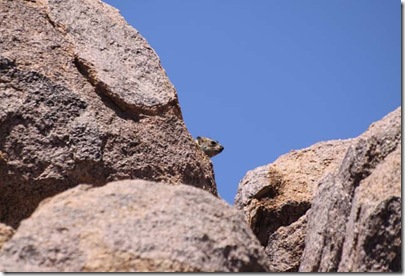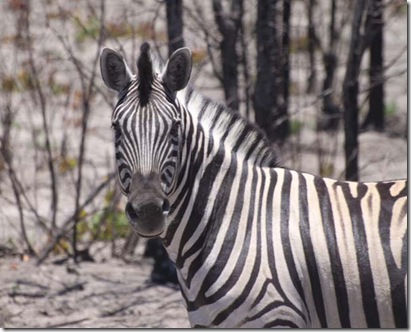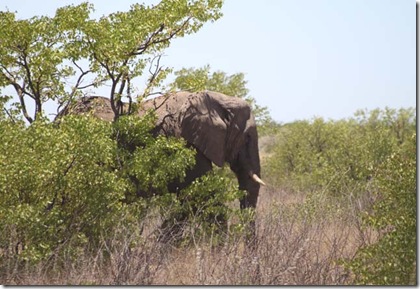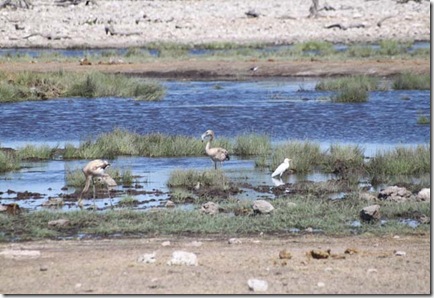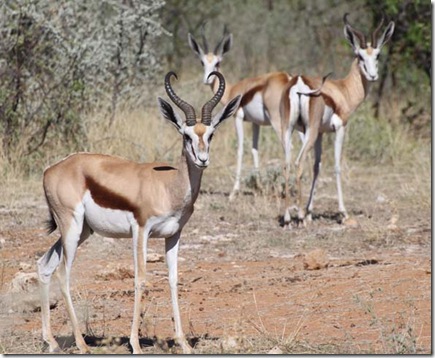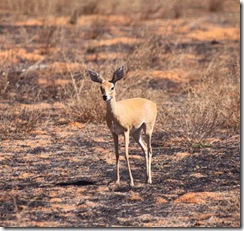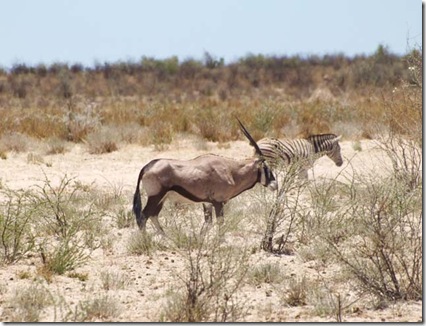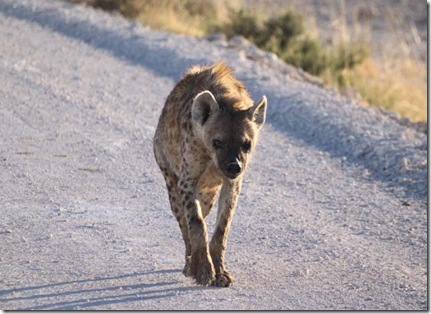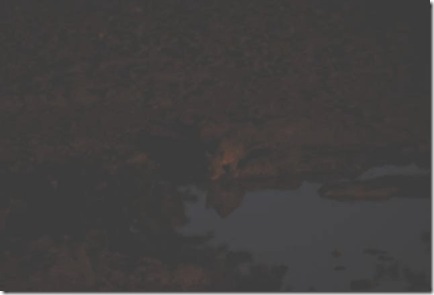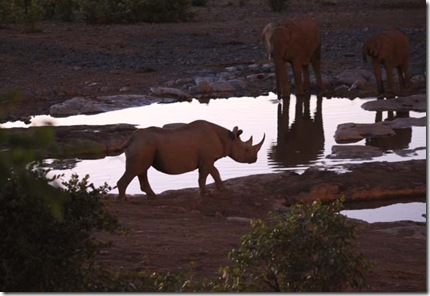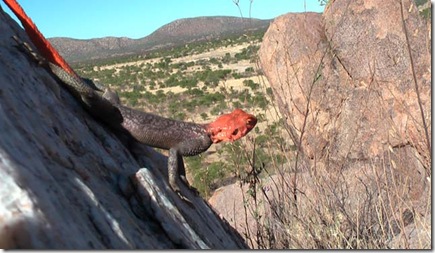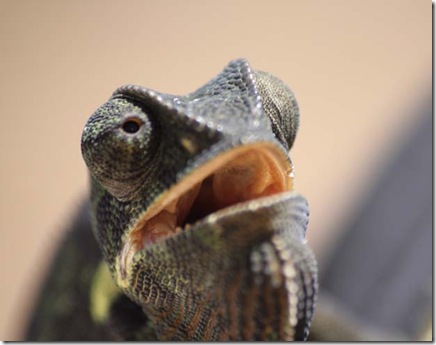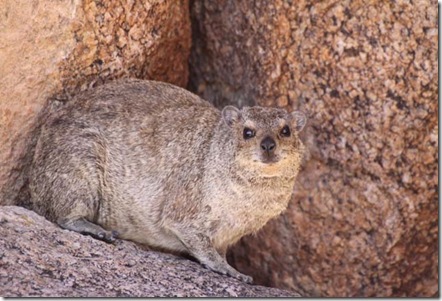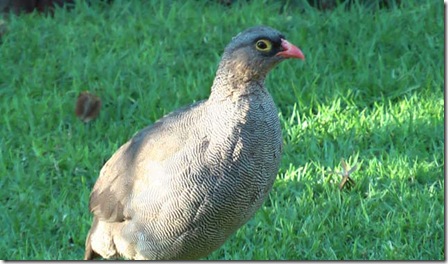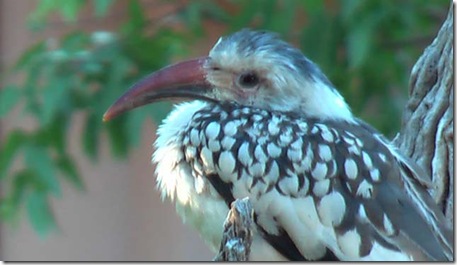"Pity Southern Africa's first people. Pity the people with no name. For when you are the only ones, you have no need to distinguish your kind from others..."
So begins an article on the Bushmen by Peter Godwin for National Geographic magazine written in 2000. 'Bushman' isn't a derogatory name but 'San' may be. It means outsiders or vagabonds. Can we call Africa's first people that?
They call themselves Ju/'hoansi (pronounced 'zshu-wansi'), which means 'The Real People' and they really are the real people. They are a people with an ancient past with no written history apart from some rock paintings. They were considered vermin and a threat to livestock for the 350 years since Europeans landed on the African shores. They were killed in great numbers.
Today the Ju/'hoansi (the '/' is one of four symbols denoting a click - in this instance a 'Zshu' sound) are still on the edge of cultural extinction despite being intensively studied by anthropologists as one of the last hunter gatherer peoples in the world.
These hunter gatherer societies were the norm until some 10,000 years ago when we adopted agriculture. Ironically, the Ju/'hoansi can't even legally hunt today. Official sources say that they are allowed but they need a permit to do so, which in turn requires a passport, which apparently is difficult to get. They have been pushed into ever smaller areas but now, at least, they retain an element of solitude on what is their ancestral land; the Kalahari bushvelt. It doesn't mean they are left alone. In early November this year, cow herders broke down the fencing and allowed cattle to graze on the Ju/'hoansi's land.
The ancestors of the Ju/'hoansi practiced hunting even before hunting weapons were invented by running down their prey in what is termed as 'persistence' hunting and is surely the first instance of a requirement to track an animal by human-kind; so ancient is the art of tracking - and how ancient and perfect is their skill at doing it. So much so that they were recruited into various African armies just for that purpose. I considered myself privileged just to watch them, let alone join in (that's for a later post).
In the north east of Namibia, the north western part of the Kalahari begins. It reaches into Botswana and South Africa and border on Angola and Zambia. After 30 minutes driving along a soft, sand track we came to a halt in a village and were immediately greeted by a number of bushmen.
It was no surprise to see that the 'new' village wasn't too far removed from the grass shelters we would be building later. Only the school house seemed to be a permanent structure as we know it. It was also no surprise that the bushmen were not in traditional attire. This would be saved for when they visited us at our camp or when working at the traditional village.
The bushmen were grinning. They never stopped grinning and laughing. Maybe it was the thought of soon having access to a cup of tea with 6 sugars, packets of sweets that we bought from a supermarket on the way and their favourite western food, porridge (with maple syrup of course).
They are classed as a peaceful society. They avoid conflict and everything is done by discussion with minimal argument and that's even with the women being involved as well. Fancy that. Even when we were tracking, it was a consensus between the trackers that determined what the animal had done and where it had gone.
We were greeted in a traditional way later in the evening, when the chanting and syncopated clapping began. Some of the men started a muscular shaking but the story and actions were difficult to interpret. Apparently the chanting was to welcome us and keep the spirits from harming us.
From then on, they walked the mile to our camp every morning for their cup of tea. Depending on the task in hand, we either followed them into the bush or they led us to the traditional village. They were hard task masters and we copied everything they showed us. They knew when we were really struggling and took over the task but not after reprimanding us in a friendly way, which usually ended up with all of us in fits of laughter. They were great teachers and knew what we wanted to learn.
We were warned that one particular day, we would have to walk quite a way to retrieve a root for our quivers. We loaded up with water and provisions only to see the bushmen pointing at our vehicle. We quickly go the idea and soon, complete with a dozen exited and chattering bushmen and women clambering in, around and on the Land Cruiser we started along the sand tracks to our destination - a sight I regret not being in a position to photograph. It was quite obvious they just wanted a ride in our jalopy!
What really struck me was their sense of humour. One of them tied a stick to the back of his friends loin-cloth. After shouting what could only be interpreted as 'snake', the unfortunate fellow leapt up and ran around in panic looking behind himself as the stick followed him everywhere he went.
On another instance I was the brunt of their jokes. I took over tracking a duiker (small antelope). I followed the tracks for a way and then came to a halt. A tap on my shoulder told me I was going in the wrong direction. No surprise there, but I struggled to imagine why the duiker had actually turned nearly 180 degrees and then gone off at an acute angle. Nevertheless, the tracks were there and I eagerly started off in pursuit. After a couple of strides, I heard a giggling behind me and turned to see everyone sniggering behind their hands, including the bushmen. Apparently, I was successfully following stick marks that the bushmen had jabbed in the sand! You guys!
I only got my own back when a kudu skin was dug up after being buried to stop it drying out. I accused Kgau of the putrid smell by pointing at his arse and holding my nose causing the rest of the congregation to fall about in fits of laughter!
They were truly amazed by some of the gifts we handed to them at the end of the 5 days. String, batteries, wind up torches, a mirror and clothes were all welcome. I gave my new found tracker pal - who had named me /Ui (zchwee - meaning seed of a mopani tree being short and stocky) a titanium folding spoon and a single cell Fenix torch (courtesy of Lakelandbushcraft) which he immediately put in his shoulder bag. We bought their jewellery and bush tools - a major source of income for them to subsidise their yearly income from the hunting concession.
I have much more to write about the Ju/'hoansi which I will probably do in a separate article. I can only thank them for their hospitality, which I know they will never hear or never see.
I can also categorically say that all the time I can write and all the time people want to read what I write, the bushmen will from now on always have a name; a real name for real people.
Next post - Bushcraft with the Bushmen.
Moving pictures of the trip are now on my YouTube channel including some of the Ju/'hoansi singing and chanting.
